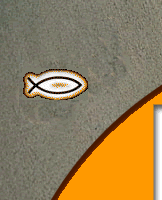| Note:
Some Links may be out of date.
Blitz
Ezine # 164 May 20, 2002
How to Create a Viral marketing Campaign
Note:
This is an archived issue. Some links and/or content
may be outdated
The
Blitz-Promotions News Letter.
Issue no. 164, May 20, 2002
************
In This Issue **************
Comments
Food for thought
100 Ways to promote -
The Classifieds
Next Issues
+++++++++++++++++
Food for thought
+++++++++++++++++
If
you keep doing the same thing - don't expect different
(better) results.
+++++++++++++++++++
+++++++++++++++++
100 Ways to promote your site - # 65
Contagious (Viral) marketing
+++++++++++++++++
Viral
marketing is basically a hyped version of word of mouth
marketing. There are a couple of components that will
add to the possibilities for your success.
Basically
if you have ever received a note from a friend or associate
that tells you to 'check something out', you've been
a victim of a virus (the good kind).
1.
Your virus should be targeted to your niche. The whole
object of a viral program should be to
-get
someone to send something to a friend.
-get the friend to visit our site.
-get the friend to buy something (or sign up for a newsletter
etc.).
-then they will tell their friends about it.
2.
Find something that is easy to 'pass along'.
This
can be anything from your newsletter to a screen saver
(we'll talk about how to build one later in our series).
3.
Your Virus should be worth passing on. It can be funny,
useful, touch someone's heart strings, you get the idea.
Many
of our previous promotion methods can have a viral twist
to them. Adding the twist can be as simple as asking
someone to pass it along.
You
can find a whole list of our previous promotion methods
by clicking on the link below -
http://www.blitzpromotions.com/freepromotionhelp.htm
During
next weeks issue we'll explore one of the tools you
can use to create a viral promotion - web cams, then
we'll send along some more after the Search Engine Summer.
+++++++++++++++++
100 Ways to promote your site - # 66
Free media - using short articles
+++++++++++++++++
How
To Get FREE Media Publicity With Your Short Announcement
by Kevin Nunley
http://DrNunley.com
Every
day radio, TV, newspapers, and ezines give away millions
of dollars in FREE publicity. There is nothing like
waking up in the morning to the sound of your favorite
radio announcer enthusiastically recommending your product,
service, or idea. Your good reputation can spread far
and fast, virtually over night.
Usually
businesses send out press releases to get their news
to editors. But there is something many editors like
even more: a media announcement.
Media
announcements are short. They usually have a headline,
a paragraph or two with more details, and contact information.
That's it.
Here
is an example:
*****
STARS
OF "KIDS ALONE" CHOOSE ROTWORTH COOKIES AT LOCAL EVENT.
Marty
and Melda, the stars of the hit movie "Kids Alone" will
appear at Rotworth Cookies, 1010 State in Centerville,
to explain why they insisted on Rotworth Cookies for
the movie. The treats are prominently featured in a
key scene and are essential to the film's plot.
Date:
Saturday March 3.
Time: 10 AM
Contact: Roger Smith,
Rotworth Cookies 555-1213
email@rotworth.com
http://theirsite.com
****
Try your hand writing your own media announcement. You
can use my media announcement creator at
http://7lessoncourses.com/kevin_nunley/create-release.asp
Simply
enter your contact info and a few sentences about your
business and--presto--your announcement is created and
emailed to you.
Editors
like the short, simple, easy-to-grasp format. When you've
got 100 press releases crossing your desk, a QUICK message
is always welcome.
Use
your headline and paragraph to focus on the "juicy"
part, as I like to call it. In the example, stars from
a hit movie appearing locally was the juicy part. It's
the hook that an editor knows will interest many people
in their audience.
That
last point is the key to getting press. It's not what
YOU feel is important, it's what the EDITOR thinks her
audience is interested in that counts.
Most
media people instinctively believe they can interest
the audience in only a few stories at a time. They know
their best bet is to connect new stories to topics that
already have the public's attention.
Look
for ways to connect your story with topics the media
covers frequently. Media love celebrities, scandals,
community improvement, and politics. They love science
and technology stories when they pertain to our health
or scare people (I know, it's a cynical point, but a
key factor, especially in TV news programming).
Media
especially like local angles on a national or international
story. If Congress is about to pass a controversial
law affecting cookie production, Rotworth Cookies can
get local coverage by explaining how the law will impact
its many employees, all who are local citizens known
by many in the audience.
All
media like controversy, but talk radio likes it most.
One smart radio programmer once told me "if talk radio
doesn't have controversy, it's dead." TV likes events
that are visual. That's why you see the mayor opening
a new store with a GIANT key or the CEO of a business
giving a GIANT check to a charity. Newspapers deal more
with ideas and what people said. Make sure you have
some interesting, colorful, or pithy comments ready
for the reporter that calls.
How
do you distribute your media announcement? Call and
tell your news to the person in the newsroom who answers
the phone. Then email, fax, or regular mail your announcement.
It doesn't hurt to do all three (some editors might
get annoyed, but most aren't that organized and appreciate
you making sure they get multiple opportunities to use
the material).
Above
all, make sure you are ready and available to provide
more details. The entire point of a media announcement
is to get the editor interested and on the phone with
you. Many like to email. Provide several phone numbers
where you can be reached and an email address you check
often. Many times a reporter will call you hours or
minutes before deadline. Fail to get back with them
quickly, and your story will be skipped.
Some
editors may say "send me more information..fast!" Have
a press packet ready. This could include an expanded
version of your media release. Add more information
to it to get a full page press release. Photos also
work well if you regular mail them or put them on a
web page. A link to the page can go in your press release.
A
cover letter isn't necessary, but it's a good idea to
include a bio sheet. Tell what your business or organization
does, how you got started, your history, and your plans
for the future. Be sure to include quotes that could
be used in an article or on the air.
Broadcast
media--radio and TV--like a list of questions they can
ask you. You can also provide the answers to the questions.
This can work well for print media as well.
What
editors really want is for you to help them do their
job. When I was in media, I gave away thousands in free
publicity. I never looked at it as giving away publicity,
just as looking for interesting stories my audience
would appreciate. If a business helped me do that, then
I was more than happy to give them a "plug," mentioning
their name and product.
Be
persistent. Send just one media announcement out and
you probably won't get much response. Success comes
when you consistently look for ideas or events to tell
the media about.
The
biggest PR successes haven't come from great stories
as much as from small business folks who just won't
give up. Take out a calendar and jot down events you
could stage over the next few months. It might be an
event at your store, one you put on with a local charity,
a new section of your web site, or you as activist in
a local controversy or cause.
Kevin
Nunley writes press releases and sends them to 5,000
media nationwide. "I've never seen a business that couldn't
get free media." See his PR deals at http://DrNunley.com
Reach Kevin at
mailto:kevin@drnunley.com
or 801-328-9006.
|
















